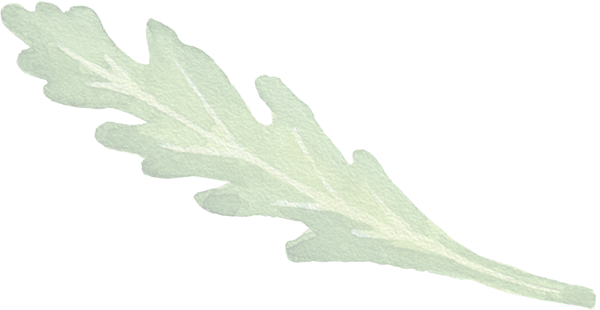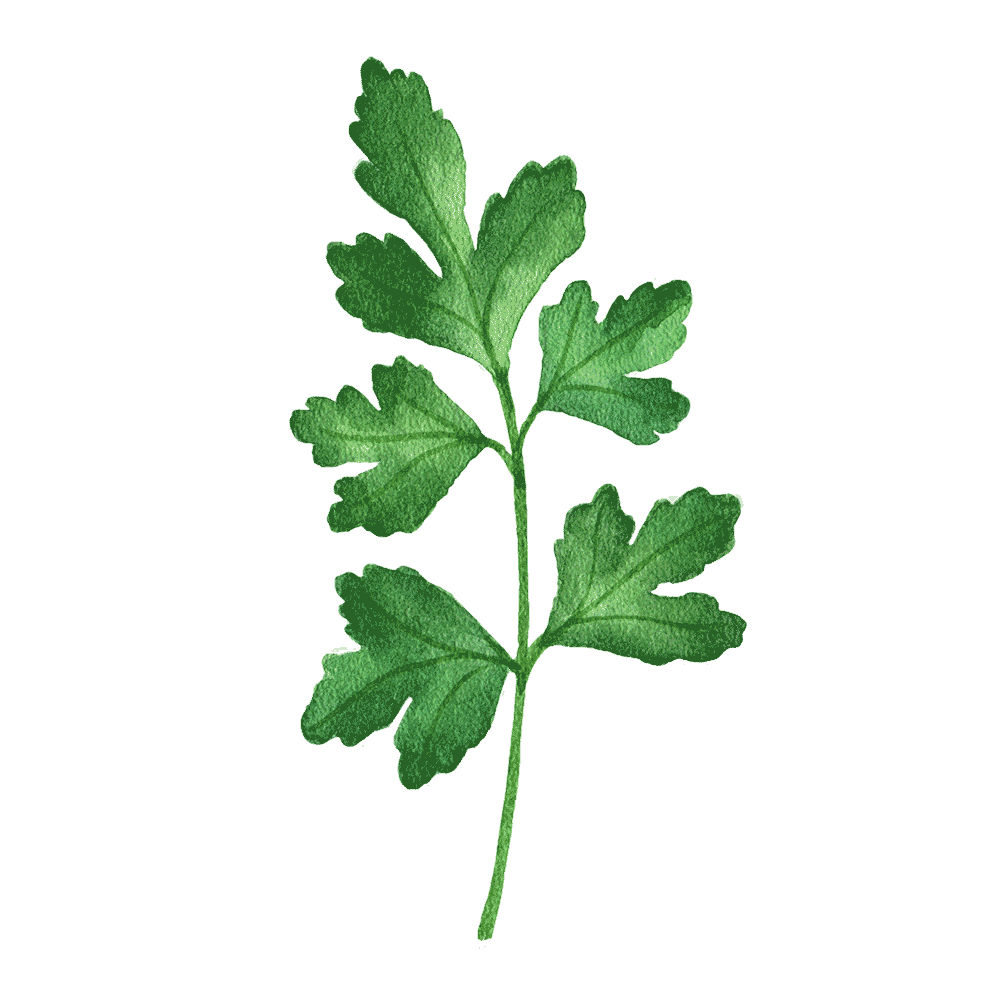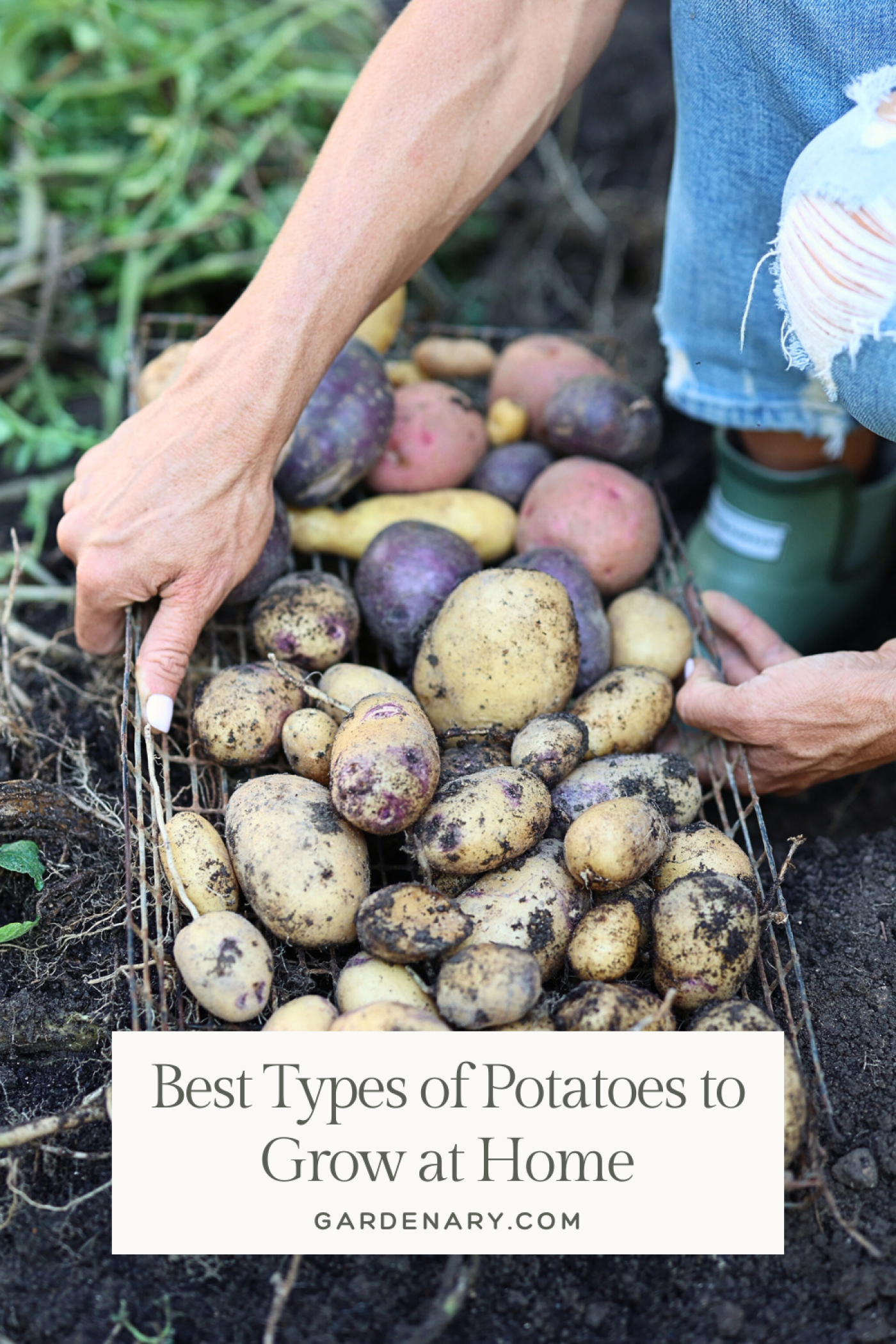What Are the Best Potato Varieties to Grow in Your Vegetable Garden?
There are so many different varieties of potatoes you can grow in your garden. Over 5,000, in fact, according to Kew Gardens. That's like 4,995 more types than you can find in the produce section—reason enough, in my opinion, to give growing your own potatoes a try!
Potatoes are also super easy to grow and fun to harvest. You don't even need raised beds. Just stick 'em in some large containers or right in the ground. Come harvest time, you'll enjoy overall richer flavors and better textures than store-bought varieties.
With all those different types of potatoes, it can be overwhelming to choose. When I'm picking my varieties to grow for the year, I look for some staples I know my family will eat (like russets) and some fun ones I wouldn't typically find at the grocery store. That usually means growing at least one purple or blue potato.
Let's look at the characteristics that distinguish different varieties, and then I'll tell you my top 10 favorite potatoes to grow.
What to Consider When Choosing Potato Types
You might think a spud's just a spud, but there are actually pretty big differences in what your potato should be used for once harvested, as well as how long it will take to be ready to harvest. Different varieties have unique characteristics to consider, so you have to decide based on your personal preferences, growing conditions, and storage needs.
Starch & Sugar Content
When you're picking varieties to grow, consider what you'd like to make with your homegrown potatoes. Different potato varieties have varying amounts of starch and sugars in them. The starch level determines whether the potato will be fluffy and break down during cooking, or remain intact with a firm, waxy texture.
High Starch
If you like to bake, mash, or fry potatoes, pick a variety that's high in starch. The higher the starch, the more the potato will break down.
Low Starch
If you like to boil, roast, grill, or sauté potatoes, or if you want to toss them into soups, stews, or potato salads, go with a variety that's low in starch. The lower the starch, the better the potato will keep its shape when cooked.
Warm & Cool Season Guides for Year-Round Success
Stay on top of your garden all year with both the Warm and Cool Season Garden Guides! This two-book set gives you at least six full months of expert guidance, ensuring you always know what to plant, how to care for your garden, and when to harvest.

Days to Maturity
Potato varieties are grouped by the number of days they take to reach maturity: early, mid-season, or late. The best type for you might depend on how many days you have left before your first frost of the fall.
Early Potatoes
Earlies reach maturity in just 75 to 90 days (sometimes even less). They're great to grow if you have a short season or just can't wait to dig up your first tubers. Early varieties also tend to take up less room in your garden and be smaller at harvest time. They're less prone to potato blight since they're typically harvested before the disease can take hold. Earlies typically taste best when eaten soon after harvest. Yukon Golds are an early variety.
Mid-Season Potatoes
Mid-season types mature in about 95 to 110 days. French Fingerlings are a mid-season variety.
Late-Season Potatoes
Late varieties, also called maincrop potatoes, require as long as 120 to 160 days to grow to maturity. In return for taking longer to harvest, your crop will last longer in storage, often well through the winter months. German Butterball potatoes are a popular late season potato to grow.
What About New Potatoes?
This is not a specific type of potato; it's just an indication of when the potato was harvested. "New potatoes" are those harvested before the tubers have fully formed underground and hardened their skins. Mature potatoes should have thick, firm skin that can't be easily rubbed off with your thumb. New potatoes, in comparison, are super delicate.
Potatoes can be harvested at this stage (they're tender and creamy!), but you want to be super careful with them and then enjoy them ASAP. They're not curing or storage material.


10 of the Best Potato Varieties to Grow at Home
Potatoes are often lumped into six different categories based on shared characteristics. There are russet potatoes with their rough brown skin, yellow potatoes, red potatoes, white potatoes, purple or blue potatoes, and fingerlings.
Out of all the potato varieties in existence, here are my top ones to grow in my garden:
- Adirondack Blue
- Adirondack Red
- Austrian Crescent Fingerlings
- Dark Red Norland
- German Butterball
- Kennebec
- Purple Majesty
- Rio Grande Russet
- Russian Banana Fingerlings
- Yukon Gold
Now, let's look at these types broken into their different categories so you can figure out which ones will be on your must-grow list.
Russet Potatoes
STARCH LEVEL: HIGH
TIME TO MATURITY: LATE-SEASON
There's nothing like a good ol' russet for a baked potato on a chilly night. Russets are medium to large potatoes that are usually more oblong in shape. They have a floury, flaky texture and a mild, earthy flavor. Thanks to their high starch and low moisture content, they store well and make for the perfect baked potato. These guys are loaded with antioxidants (make sure to eat the skins—don't worry, they're flavorful!).
Best Russet Potatoes: Rio Grande & German Butterball
I recommend growing Rio Grande potatoes if you want russets but don't want to wait 130 days for them. This fast-growing russet cultivar produces spuds with rust-brown skin and white flesh in just under 65 days. It's also high-yielding, so you'll have lots of baked potatoes in your future.
German Butterballs are—just as you'd expect from their name—super buttery and delicious, but you have to wait 100 to 130 days to harvest them. This popular heirloom variety has yellow flesh, an oval shape, and somewhat smooth skin for a russet. They're ideal for making hash browns.
Yellow Potatoes
STARCH LEVEL: LOW TO MEDIUM
TIME TO MATURITY: EARLY TO MID-SEASON
Yellow potatoes are so called due to their yellow- or golden-colored flesh. They're often slightly waxy, which gives them a rich, velvety texture when cooked. Flavor-wise, they're slightly sweet and buttery. Thanks to their lower starch content, they're great for roasting, boiling, and grilling, but you can also bake or mash them.
Best Yellow Potato: Yukon Gold
Yukon Gold potatoes are the classic yellow potato variety. A hybrid, they were created to boil well and make fluffy mashed potatoes—the best of both worlds. When roasted, you get that great crunchy skin on the outside and delicious, creamy goodness on the inside. These taters are early, meaning they reach maturity in just 65 days.
Red Potatoes
STARCH LEVEL: LOW
TIME TO MATURITY: EARLY TO MID-SEASON
Red potatoes are small to medium in size and rounded with smooth red skin and white flesh. They are waxy with a creamy texture and a bit sweeter than white potatoes. They hold their shape through cooking, so they're perfect for potato salad and pot roasts.
Best Red Potatoes: Dark Red Norland & Adirondack Red
Dark Red Norlands are early potatoes with a great flavor and high yield. They're resistant to scab and other common issues.
Adirondack Reds actually have red skin and ruby-red flesh (which turns a light pink when boiled). These mid-season potatoes are oblong and somewhat flattened, instead of the typical roundness of red potatoes. This variety is easy to grow and stores well—and beautiful to boot!
Other popular red potato varieties include Red Chieftain (mid-season) and Pontiac (early).
White Potatoes
STARCH LEVEL: LOW TO MEDIUM
TIME TO MATURITY: EARLY
White potatoes are considered the best all-purpose potato. They're typically small to medium-size, round or oblong, and tan with white flesh. They're known for being super moist, creamy, and thin-skinned; in other words, they're perfect for making mashed potatoes. They're also good for grilling or tossing into soups and curries since they hold their form when cooked.
Best White Potato: Kennebec
This is a creamy early variety known for producing high yields in just 80 days. Even though these potatoes have thin skins, they store well.
Other popular white potatoes include Cascade (late-season) and Superior (early to mid-season).
Purple & Blue Potatoes
STARCH LEVEL: MEDIUM
TIME TO MATURITY: MID-SEASON
These eye-catching potatoes are typically small to medium-size and come in a variety of shapes. They're grouped, of course, by their purple or blue skin and blue, purple, pink, red, or white flesh. They often provide an earthy or nutty flavor and have a low sugar content.
Here's what's really cool: These potatoes get their deep purple or blue color from high levels of anthocyanin and carotenoids, antioxidants that help fight and reverse oxidative stress and inflammation in our bodies. So basically, these potatoes are really good for you. (Guilt-free french fries, anyone?)
Best Purple Potato: Purple Majesty
Purple Majesties, which take about 85 days to produce, are, by far, my favorite purple potatoes. I love growing them because I find them unique looking, with their wine-dark skins and purple flesh, and I prefer to grow things I can't typically find at the grocery store. Not only do they keep their rich color after cooking, they're sweet, buttery, and great for frying.
Another great variety is Purple Peruvian Fingerling (early).
Best "Blue" Potato: Adirondack Blue
These potatoes are so fun to grow. They have dark purple skin and purple flesh that stick around through cooking. They're ideal for steaming or making extra-gourmet potatoes au gratin.
Fingerling Potatoes
STARCH LEVEL: LOW
TIME TO MATURITY: LATE
This small bunch is typically about 2 to 4 inches long and narrow, kinda like a finger (thus the name). You can grow red, white, yellow, and purple fingerlings (like Purple Peruvians). They often have a firm, waxy texture and a nutty or buttery flavor. Fingerlings are great for pan-frying and roasting.
Best Fingerling Potatoes: Russian Banana & Austrian Crescent
You've probably heard of French Fingerlings, but I love growing Russian Bananas. These gourmet yellow potatoes are well worth the 95- to 125-day wait. They have thin skin and firm, delicious flesh—perfect for potato salads. They hold up well to cooking and keep their shape.
Another popular fingerling is Austrian Crescent, which produces in about 105 to 135 days. These fingerlings stay thin but can grow up to 10 inches long.
What Are the Highest-Yielding Potato Varieties?
Several of the potatoes on my top 10 list are known for their high yields, including Yukon Golds, Rio Grande Russet Potatoes, and German Butterballs.


The 5-Minute Gardener
Nurture a year-round gardening habit with just 5 minutes a day, from the author of Kitchen Garden Revival and Leaves, Roots & Fruit.
How to Source Potatoes for Your Garden
Potato plants can produce seeds, but we most often grow potatoes by planting what's called "seed potatoes", which look like regular ol' potatoes, not seeds. Potatoes grown from parts of the parent potato grow true to form, unlike those grown from seeds. That way, you know exactly what to expect when it comes to size, shape, texture, flavor, and storage capability.
You can start new potato plants by sprouting potatoes from the store, but keep in mind that most store-bought potatoes have been treated to prevent them from sprouting. The best option is to buy organic seed potatoes from a local nursery, farm supply store, farmers' market, or online. I typically order my seed potatoes from Mythic Farm, but there are lots of great online suppliers like High Mowing Seeds and Renee's Garden. Look for the USDA organic emblem on the varieties you're interested in.
Online suppliers sell out of popular varieties quickly, so I recommend ordering your potatoes for the year as early as possible, even around the New Year. Most suppliers hold your order until you're approaching your last frost date, based on your growing zone.


Time to Order Your Potatoes!
Now that you've got your must-grow list, it's time to order those potatoes and get them into the ground. When you're ordering potatoes, keep in mind that each pound of seed potatoes can produce at least 5 or 6 more pounds at harvest.
Every year, I seem to forget what a pound looks like and order way too many potatoes to grow in my kitchen garden. I end up growing potatoes in these old wine barrels I converted into planters and sticking the extras throughout my in-ground pollinator garden. I ultimately harvest probably about 100 pounds of potatoes, but those harvests come at different times because I'm growing early, mid-season, and late potatoes.
One last tip: Once you've planted your potatoes, don't forget to mark the planting areas with plant tags so you, one, don't end up planting something else on top of them and, two, remember which variety you've planted where.
Learn More About Growing Your Own Potatoes











